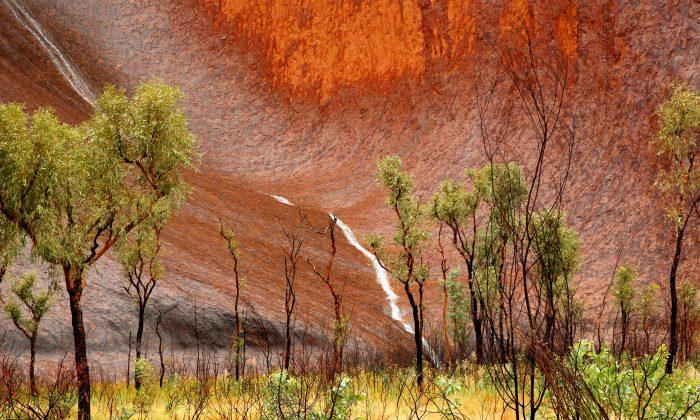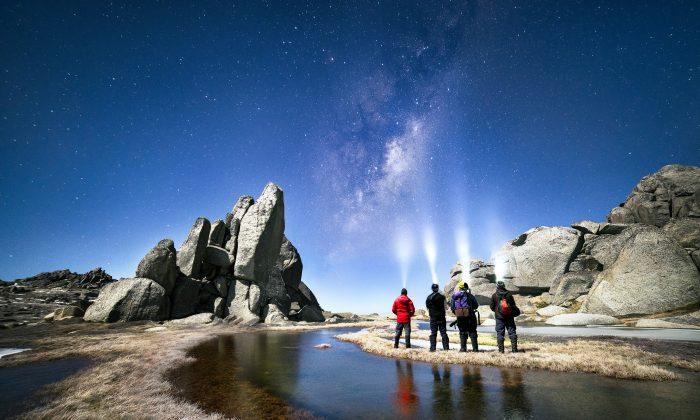SYDNEY—It may be an accident that the G20 Leaders’ Summit and the once-in-a-decade World Parks Congress (WPC) are taking place in Australia at the same time, but the irony is not lost on Peter Cochrane, Australia’s WPC Ambassador.
“They certainly complement each other,” he said diplomatically.
Prime Minister Tony Abbott has made it clear that climate change and the environment will not be on the agenda when leaders from the top 20 nations meet to discuss the global economy in Brisbane on Nov 14-16.
For attendees of the week-long World Parks Congress, at the Sydney Stadium from Nov 12-19, the environment and climate change will be pre-eminent.
Convened by the The International Union for Conservation of Nature (IUCN), the world’s oldest and largest global environmental network, the Sydney congress will bring together more than 4000 delegates from 160 countries to focus not only on parks, but on the natural world and its importance to human life.
“It is also about all those benefits that come from looking after the actual world that we live in,” Mr Cochrane said, in a phone interview.
These include ecosystem services, disaster reduction and health and pharmaceutical benefits.
Building On Past Congresses
A former director of Parks Australia, which along with the NSW Parks and Wildlife Service are co-hosts of the upcoming event, Mr Cochrane says the Sydney WPC is looking to engage more broadly with the public than earlier congresses.
“We want to find new partners, new engagements, new opportunities that will bring wider support...in making sure the natural world is there for future generations,” he said.
Since its inception in Seattle in 1962, each WPC has marked a significant shift in thinking about protected areas, Mr Cochrane said. Early congresses focused on separating the wild from human activity and from these came landmark United Nations guidelines for PA’s and World Heritage and Wetlands Conventions.
Since then, the view that nature required the exclusion of human activity has changed.
“The Durban Congress [2003] represented a major shift in that paradigm – it is not about excluding people, it is about including people and actually working with people,” he said.
The change in thinking has impacted indigenous populations, particularly in African countries where many tribes had been removed to make way for game parks.
Indigenous populations can now be recognised and rewarded for their role in land management and conservation. In northern Australia, for example, indigenous ranger groups use cultural knowledge to manage land and control for fire across 28,000 square kilometres of West Arnhem Land.
Breaking New Ground
Along with coverage of established themes like conservation, climate change and indigenous knowledge, the Sydney Congress will break new ground.
“People around the world are finding some really clever, innovative inspiring ways of conserving the natural world, as well as maintaining cultural values and generating income,” Mr Cochrane said.
Tourism, the traditional revenue raising avenue for many parks and protected areas, has been joined by a whole range of “eco-system services”.

These are natural systems that support human activity and are valued accordingly.
Water catchment areas for many of the world’s cities lie in surrounding protected areas, for example. Water rates go towards the maintenance of those areas or, in some cases, to indigenous groups who manage them.
Similarly, leaving vegetation as is prevents soil erosion, heightens carbon dioxide absorption and increases oxygen output.
Disaster risk is another area. This will be led by the Japanese who, after the devastating 2011 tsunami, found that re-greening and re-establishing coastal systems are far more effective in buffering the impact of tsunamis than engineered systems.
“The whole idea of ecosystem service is one that has been growing around the world and that will be a significant focus at the World Parks Congress,” Mr Cochrane said.
Health Benefits
Another “pivot point” this year will be health. At least half of the active pharmaceuticals have a natural origin and there is still so much more to learn.
There is also increasing awareness of the preventative and therapeutic benefits of interacting with the natural world. Positive outcomes include better brain development in children, resilience to stress, and recuperative and preventive treatments of depression.

The benefits are considered so significant that the World Health Organisation (WHO) will be represented this year for the first time.
Melbourne’s Deakin University, in conjunction with Parks Victoria, have become leaders in the field, Mr Cochrane said, and will be launching a report on the topic at the Sydney event.
With more than half the global population presently under 35, health benefits have also been a wake-up call for the next generation.
The IUCN estimates that 60 per cent of the world’s population will be living in cities by 2030, so a new stream titled “Inspiring a new generation” will be launched this year and will specifically target students and young professionals.
A business stream led by the World Bank, which has been a strong supporter of protected areas, will also break new ground as the value of protected areas is recalibrated.
“It’s also the socio-economic world coming to a realisation that the natural world is actually important to them,” Mr Cochrane said.





Friends Read Free